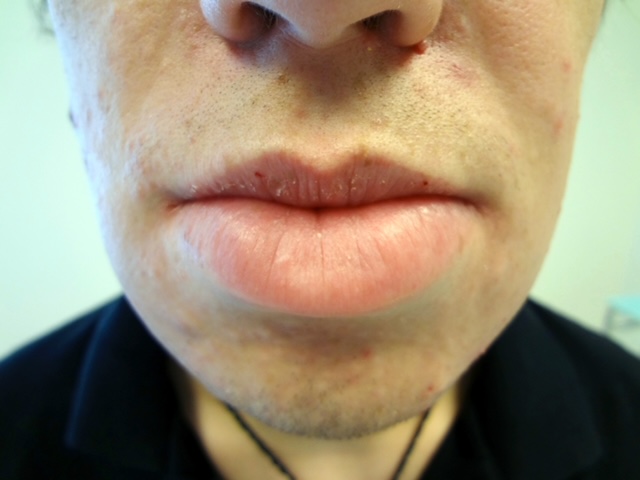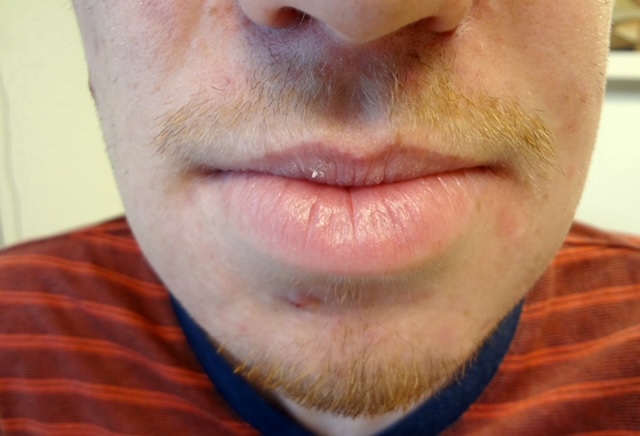By Ted Rosen, MD, FAAD
Editor-in-Chief
Ustekinumab for Cheilitis Granulomatosa
A 20-year-old patient was referred due to refractory cheilitis granulomatosa of about one year’s duration. He had already failed systemic, topical, and intralesional steroids, as well as prolonged courses of doxycycline and minocycline.
There was no past medical history of note; specifically, no symptoms to suggest inflammatory bowel disease and no history of prior lip trauma. The patient was on no drugs, and otherwise ostensibly in good health. Family history was unremarkable.

Physical examination revealed tender, indurated swelling of both the upper and lower lip, with the lower lip being considerably worse. (Figure 1)
Fissured tongue was not seen and there was no evidence of facial nerve palsy. A lip biopsy done elsewhere described abundant dermal non-caseating granulomas (including Langerhans type giant cells) admixed with a perivascular lymphocytic infiltrate. A recent chest radiograph was normal, and a QuantiFERON gold tube test was negative.
The patient was felt to be a classic example of cheilitis granulomatosa (Miescher’s granulomatosis), a monosymptomatic subset of orofacial granulomatosis.
This disorder is typically encountered in young adults, as in this patient, without racial, ethnic, or gender predilection. The etiology is entirely unknown, although some have theorized genetic, allergic, infectious, or autoimmune etiologies.
Various treatments have been reported, including corticosteroids, oral antibiotics, dapsone (alone or in combination), administration of TNF-α inhibitors, radiotherapy, and surgical resection.1

Because of a recent positive report2 and the availability of samples, we initiated off-label treatment with ustekinumab at 90 mg subcutaneously on weeks zero and 4, followed by the same dose every 12 weeks. Following three doses, and at the time the fourth dose was due, the patient demonstrated remarkable objective and subjective clinical improvement. The upper lip appeared to be “normal,” and the lower lip was markedly less swollen. (Figure 2) All tenderness had disappeared from both lips.
The patient elected to discontinue treatment. There was no exacerbation in one year, at which time, the patient relocated and was lost to follow-up.
It appears that ustekinumab may be a safe and beneficial therapy for this uncommon muco-cutaneous disorder.
References:
- Vibhute NA, Vibhute AH, Daule NR. Cheilitis granulomatosa: a case report with review of literature. Indian J Dermatol. 2013;58(3):242. doi:10.4103/0019-5154.110858.
- Karson D, Shihab N, Printy R, et al. Successful Treatment of Cheilitis Granulomatosa with Certolizumab and Ustekinumab. J Drugs Dermatol. 2022;21:317-318.

